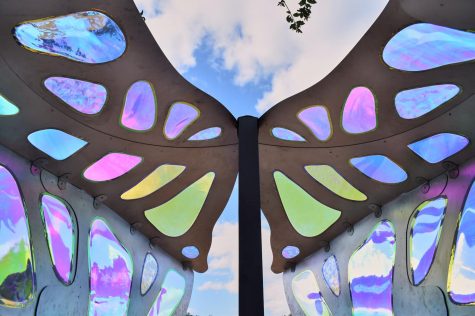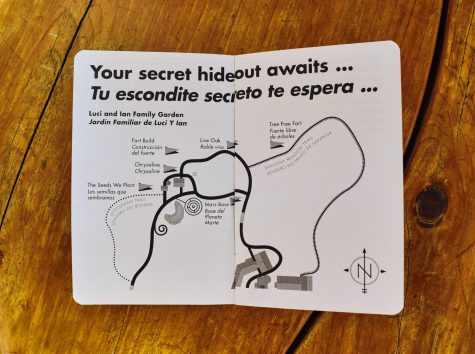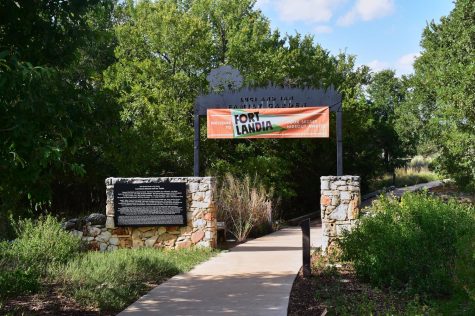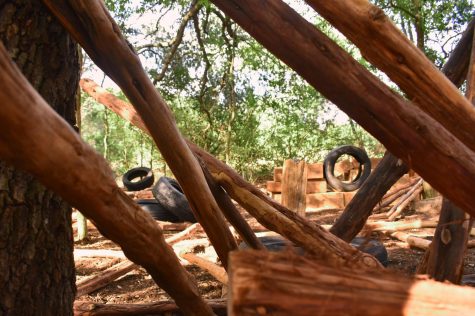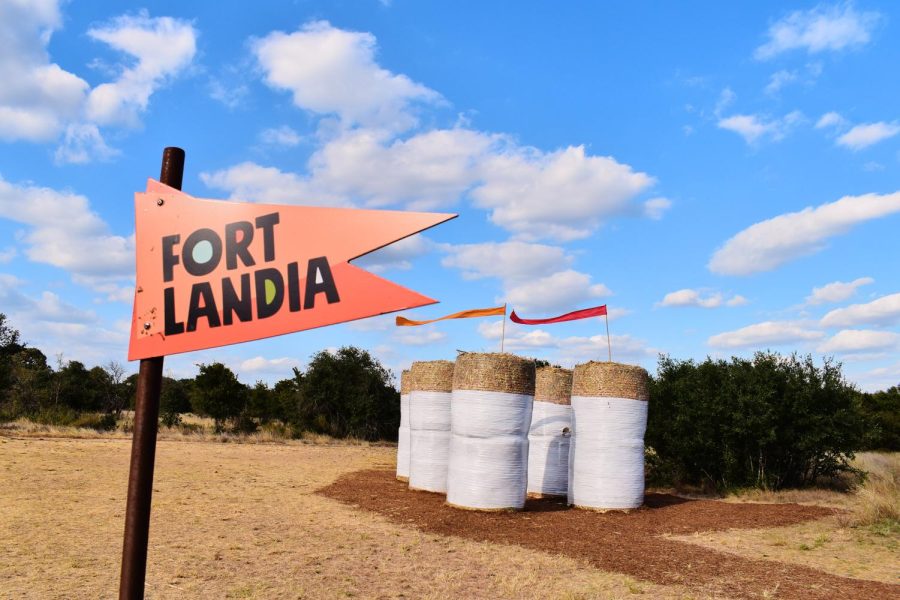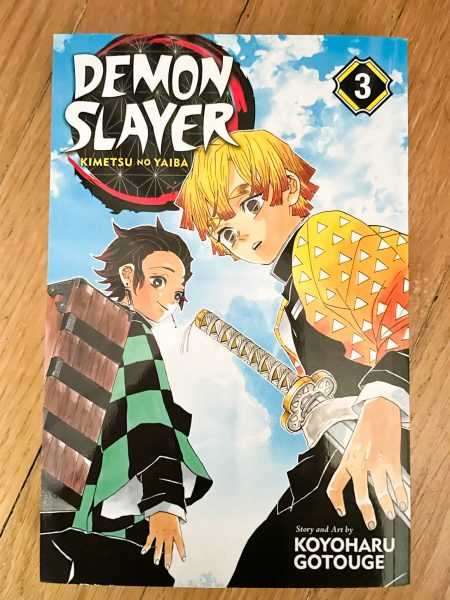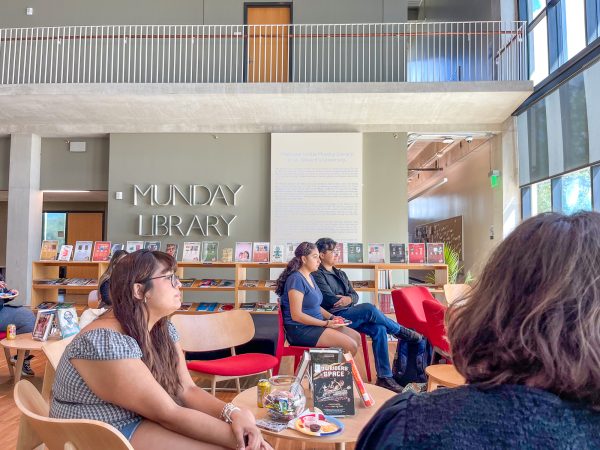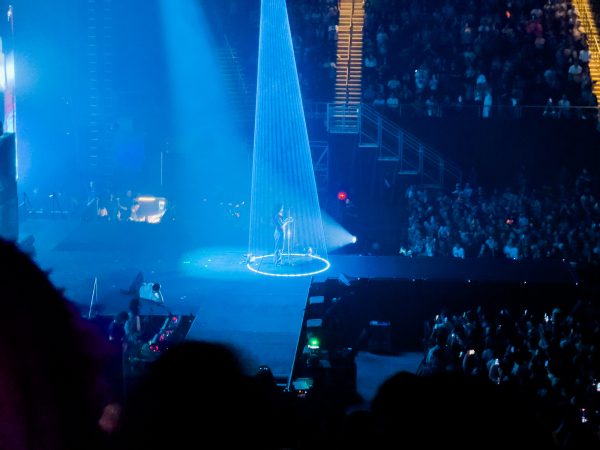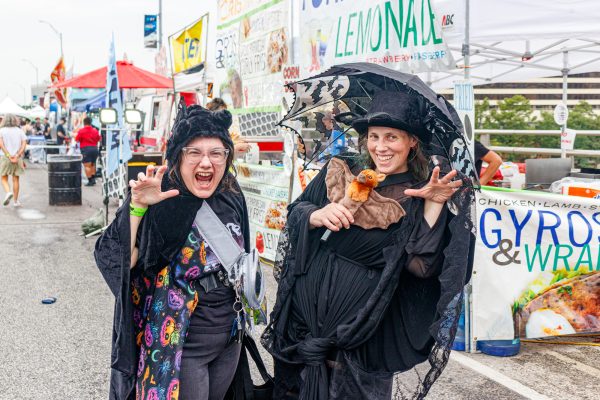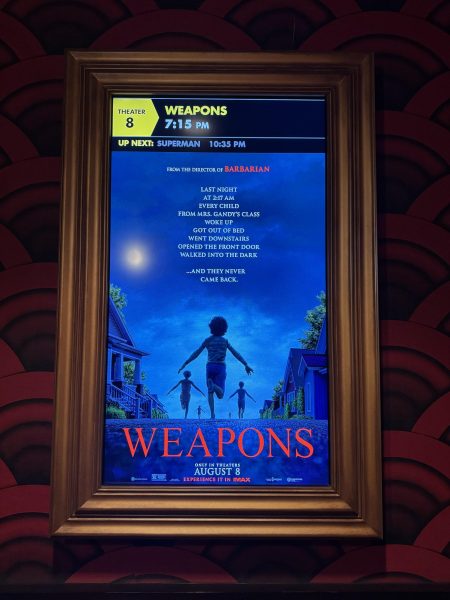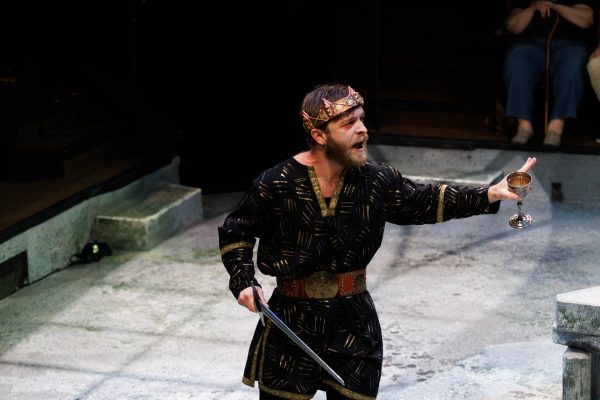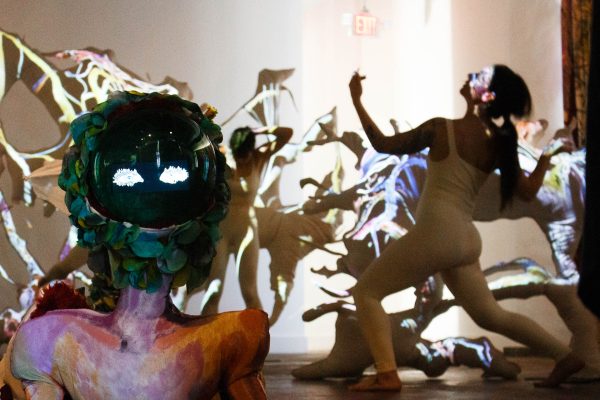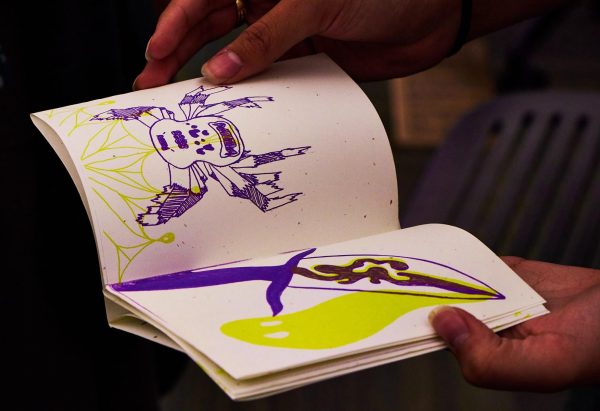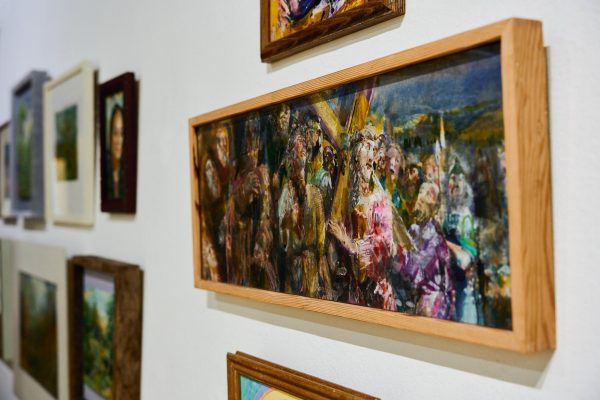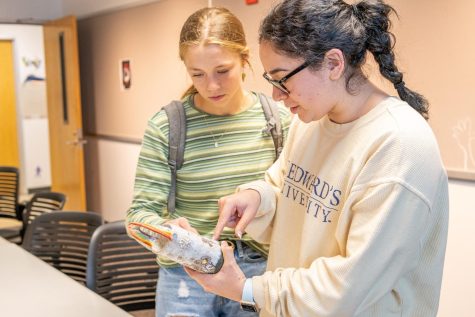Annual outdoor art exhibit highlights many artists, organizations
Kate Neuschwanger / Hilltop Views
The Fortlandia flag stands in front of Tree Free Fort by Studio Balcones. This fort is made of grass-based products. Studio Balcones plans to donate the 25,000 pounds of hay they used to create this fort to a horse therapy farm.
On Oct.12, I attended Fortlandia, an annual exhibition of secret hideouts hosted in a new location of the Lady Bird Johnson Wildflower Center, the Luci and Ian Family Garden. The Center is located in Circle C Ranch and is about a 20-minute drive from St. Edward’s. This is the fifth year the Wildflower Center has hosted Fortlandia. The exhibit opened on Oct. 8 and runs through Jan. 29.
This year, six artists and design firms took on the challenge to create imaginative forts for the exhibit Among the six were Studio Balcones, Jamie Spinello, Cornerstone Architects, Austin Design Lab, Alicia Philley, and Agi Miagi.
When I bought my ticket to enter the Wildflower Center — which was $13 with a student discount — I was also given a “passfort”, a small green journal that includes a map, and prompts such as “imagine this fort is magical,” and “What magic happens here?” All of the text inside the “passfort” is provided in English and Spanish.
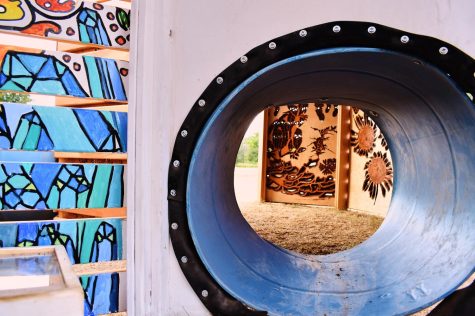
Each of the forts acted as a mini playground. They were designed to appeal to a young audience, and most of the visitors were parents bringing their children to play.
“We have come to Fortlandia since the first year…we were members (of Lady Bird Johnson Wildflower Center) and we were super excited about Fortlandia,” visitor Yanuh Kushner said as her son played. “I thought it was a really neat concept that different artists got to collaborate and showcase their stuff, and we were here every day, every weekend.”
The forts, while all unique, were inspired by natural elements and complemented their environment, each constructed using sustainable materials and building practices. One of the forts, Live Oak by Cornerstone Architects, was inspired by the landscape of Central Texas and contained an observation tower meant to encourage visitors to admire the landscape around them from a new perspective.
Phoenix Trail by Agi Maigi reflects native plants through its coloring and a monarch caterpillar due to its s-shaped form. Tree-Free Fort by Studio Balcones was created from upcycled materials in order to minimize its environmental impact.
If you decide to attend Fortlandia, keep in mind that it is an outdoor exhibit that involves some walking. Bring sunscreen and water, and be sure to wear comfortable shoes. If you purchase a ticket for entrance to the exhibit, you also have access to the rest of the Wildflower Center, so there are lots of areas to check out.
